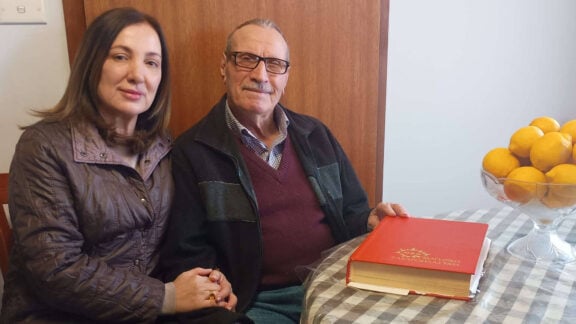What is Osteoporosis?
Our bones are constantly being broken down and replaced by new bone. But when the rate of bone breakdown occurs quicker than the rate of bone formation, this causes a loss of bone mass or tissue, leading to weaker bones.
This condition of fragile and brittle bones is known as osteoporosis.
Osteoporosis leads to a higher risk of fractures (breaks or cracks) than in normal bone, and can cause changes in posture such as developing a stoop, muscle weakness, loss of height and bone deformity of the spine.
It can also cause chronic pain, disability, loss of independence and even premature death.
Risk factors
Menopause: When women go through menopause, their oestrogen levels decline. Oestrogen is an important hormone for maintaining healthy bones so when oestrogen levels decrease, bones break down at a faster rate.
A diet low in calcium:Calcium is essential for building and maintaining bones. If you do not get enough you risk losing bone mass.
Lack of vitamin D: Vitamin D is needed for calcium absorption. Vitamin D deficiency has been show to lead to fractures and supplementation of the vitamin has shown to reduce fracture rates.
Smoking and alcohol: Smoking and excessive alcohol decrease bone mass at any age. Smoking lowers oestrogen in women, which increases bone loss. Alcohol is toxic to bone cells.
Inactivity: Long periods of inactivity can cause bones to partially weaken.
Family history of osteoporosis and fractures, and a medical history of certain conditions including rheumatoid arthritis, over-active thyroid, celiac disease and other chronic gut conditions, chronic liver or kidney disease.
For women: if your period has stopped for 6-12 consecutive months (excluding pregnancy, menopause or hysterectomy).
What can I do to prevent it?
Start building your bone mass young and maintain as much as possible during adulthood.
Your bones reach their maximum strength (peak bone mass) at about 30 years old, although most of this is achieved during puberty when your bones are growing at their fastest. After that, adults begin losing bone mass slowly.
The higher your peak bone mass, the more likely it is that you will maintain better bone health even during times of rapid bone loss such as menopause and old age.
Therefore it is crucial that children and teenagers get enough calcium to develop the maximum possible bone mass.
Adults also need dietary calcium to maintain their bone strength.
Calcium sources: Dairy products. There are also small amounts in cereals, fruits, vegetables, fish with edible bones, tahini, almonds, figs and foods fortified with calcium.
If you find it difficult to get enough calcium from food, see your doctor who may advise you about taking a supplement.
Increase physical activity: Weight bearing exercises can help build bone mass during childhood and adult years.
It can also help maintain bone mass through later adulthood, reducing bone loss with ageing.
High intensity, weight bearing exercises are best (provided you don’t already have osteoperosis or are frail) and include activities that make you move against gravity while staying upright such as dancing, hiking, tennis, and jogging.
Resistance exercises including weight training is also good for bone health.
Low impact exercises such as walking and Tai Chi are safer for people who cannot do high impact exercises.
Increase Vitamin D. Good sources include Vitamin D fortified milk, and sunlight, which you can get from being in the sun for 15 minutes a day.
Vitamins C, K, copper, zinc, and magnesium are also important for your bones.
Lean meat, and dairy are a good source of zinc, green leafy vegetables a source of vitamin K, whole grains and legumes a good source of copper, legumes, nuts and greens a good source of magnesium, and parsley and lemons are an excellent source of Vitamin C.
How to diagnose osteoperosis?
Through a bone mineral density scan. Osteoporosis usually has no signs or symptoms until a fracture happens so if you think you may be at risk, see your GP.








